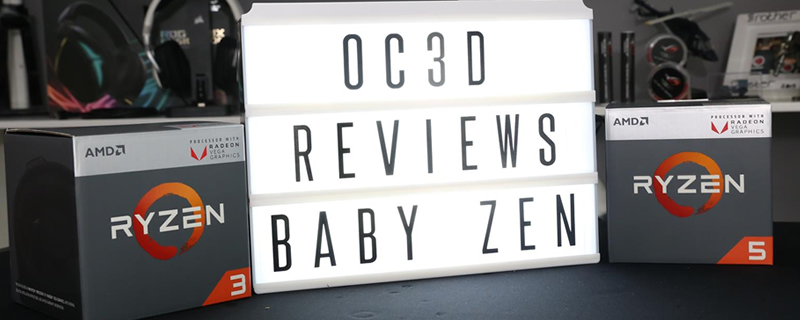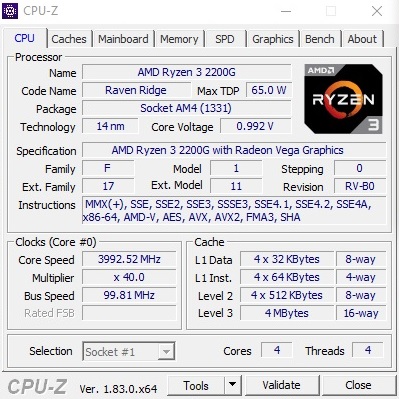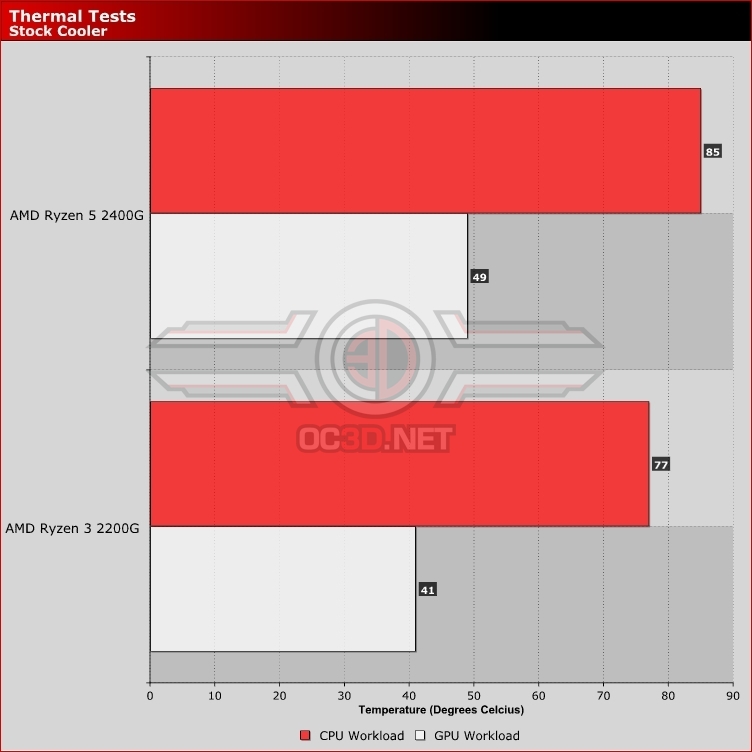AMD Raven Ridge Ryzen 3 2200G and Ryzen 5 2400G Review
Overclocking
Due to time restrictions, we were unable to go that deep into overclocking both the Ryzen 3 2200G and the Ryzen 5 2400G, aside from some standard CPU overclocking and stability testing.Â
On both models, we were able to achieve clock speeds of 4GHz, though sadly we were unable to push things any further, hitting similar limitations to AMD’s existing Ryzen series CPUs. This 4GHz limit was expected given AMD’s relatively minor changes to their core design and their continued use of GlobalFoundries’ 14nm manufacturing process, though at least both models were able to achieve this goal.  Â
On the memory side, we were able to utilise 3200MHz DDR4 memory out of the box, thanks to AMD’s promise of improved memory support with these new models. AMD is expected to build upon these design improvements further with Ryzen + later this year, though for now at least we can be happy that 3200MHz DDR4 memory clocks are easier to achieve.Â
Please note that today’s version of CPU-Z may have issues with Raven Ridge, with unstable bus clock measurements or missing measurements in some cases. These problems are set to be resolved in a future update, though they are not a major concern as most of the same data is visible within AMD’s Ryzen Master utility. Â
Â
Stock Cooling
As requested by some of our readers we have tested both the Ryzen 3 2200G and the Ryzen 5 2400G with their supplied Wraith Stealth CPU cooler, recording their thermals when used under a heavy CPU load (OCCT) and a hefty GPU load (Unigine Valley) with memory speeds at 3200MHz to maximise GPU utilisation.Â
The Ryzen 3 2200G was able to handle these loads pretty well, maxing out at 77 degrees with all CPU cores loaded under OCCT. The Ryzen 5 2400G under the same workload reached higher temperatures of 85 degrees, which sits uncomfortably close to the CPU’s temperature limit of 95 degrees for our liking.Â
For both CPU models we would advise the use of aftermarket cooling for any form of overclocking and in the case of the 2400G for stock cooling if the CPU is to be used heavily for heavy rendering in Blender or other CPU intensive tasks. In general use, these CPUs should not reach temperatures as high as our OCCT test, though some users will undoubtedly want something more substantial to cool AMD’s latest APU in more extreme use cases.Â
Â






